Welcome to the era of the $200 steak, with little relief in sight (but here’s where to find the bargains)
As the price of a piece of premium meat goes as high as nearly $37 for 100 grams, there are still bargains to be found if you know where to look.
Rib-eye steaks in the realm of $200 have become a feature of high-end Melbourne restaurants, as some households find room for splashing out while others are closely watching news that the price of beef is beginning to fall.
Cattle prices have nearly halved on last year’s sky-high levels amid forecasts of a more normal season ahead and increased supply of beef, perhaps 16 per cent more, reaching the market.
But that doesn’t necessarily mean cheaper eye fillet, either at the checkout or in restaurants.
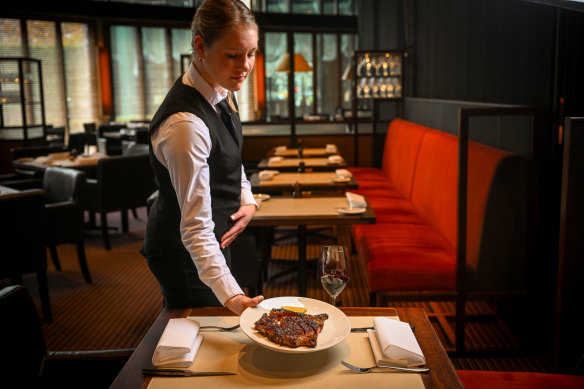
“You don’t see retail prices drop as much. They’re not as volatile as cattle prices,” says Angus Gidley-Baird, senior animal proteins analyst at Rabobank.
Retailers have also not passed on all the increases in wholesale prices seen in recent years, according to Gidley-Baird. Cattle prices increased 60 per cent between March 2019 and 2022, he says, while the price consumers paid for beef only rose 32 per cent in that period.
Melbourne seems to be in the midst of expensive steak fever, with diners happy to pay big bucks for big bone-in steaks to share at the table, a symbol of celebration and luxury that began following Melbourne’s first lockdowns.
Melbourne’s most expensive steak by weight is a full-blood Wagyu shoulder steak at Victor Churchill’s bar, which works out to $36.65 per 100g.
Rib-eye is the most popular steak at Rockpool Bar & Grill, as well as steakhouses San Telmo, Palermo and Asado, despite costing diners between $115 and $320, depending on the breed.
Rockpool Bar & Grill in Southbank sources several types of rare-breed cattle from star producer David Blackmore. Diners there are pulling back on sides, cocktails or dessert so they can still enjoy a steak.
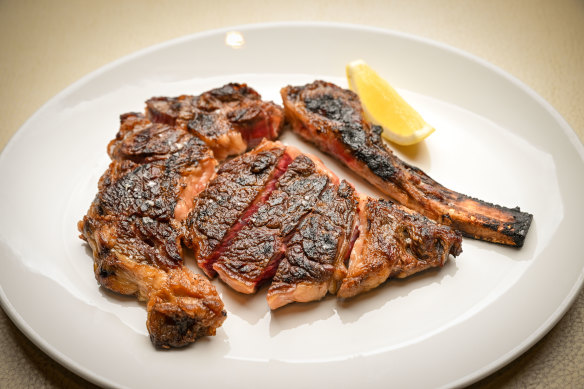
“Beef like that’s never going to come down in price really, because it’s so sought after,” says Rockpool culinary director Corey Costelloe. “People will ring up and say ‘Do you have any of this available this week?’ ”
Costelloe contrasts northern Australia’s large herds raised mostly on grain with boutique producers like Blackmore that keep as few as 20 cows at a time on pasture in lusher states. Overall market figures on the price of cattle are too broad to capture the difference in quality between different producers, he says.
Beef prices steadily climbed during 2021 and 2022, with the price for young cattle on the eastern seaboard peaking at $11.30 per kilogram (carcass weight) in January 2022.
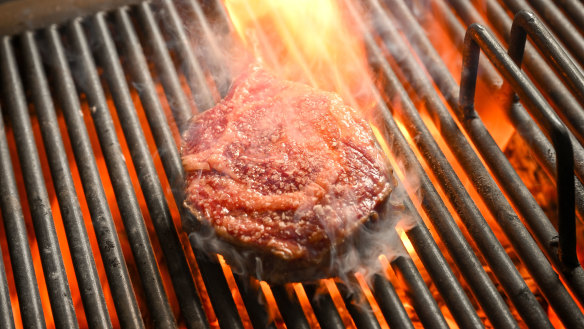
That record-breaking price – nearly double the 10-year average – was due to a combination of high grain and fuel prices worldwide plus favourable local weather conditions, with plenty of rain. It all meant that beef farmers were restocking their herds, rather than selling cattle.
The latest Eastern States Young Cattle Indicator shows cattle are now fetching around $5.85 per kilogram. A Rabobank report published in May forecast prices to hover between $7 and $8 for the remainder of this year before falling in 2024.
But consumers will continue to pay about the same for beef because of a lag between prices of live animals versus processed meat.
“The beef that’s on the shelf today comes from an animal that was born two years ago,” says Gidley-Baird.
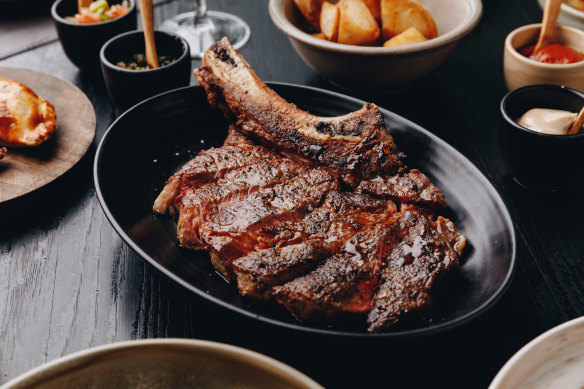
Chef Oliver Gould of San Telmo group, operator of four Melbourne steakhouses, says he’s not expecting his beef bills to drop dramatically.
“I’ve noticed in previous cyclical periods where cattle prices have gone up, they never come back [down] when it comes to restaurants. Quite often that is because a lot of cattle producers don’t make money for 10 months of the year in certain periods.”
Gamekeepers Meats supplies many top restaurants with Wagyu and black Angus from producers such as Southern Ranges and Tasmania’s Icon XB Wagyu. It is not seeing a decrease in orders, despite economic headwinds such as inflation and interest rate rises.
“Everybody’s nervous, but I don’t know if anybody’s really acting on it yet,” says co-owner Jerome Hoban.
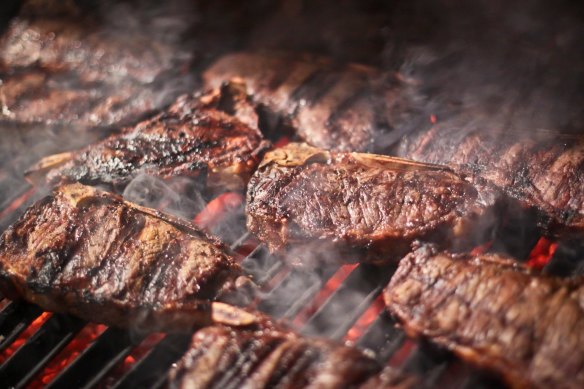
As prices skyrocketed last year, chefs looked to other parts of the animal for steaks, such as the flank, rump cap or chuck tail flap, which pushed up prices on those secondary cuts, according to Hoban.
“Chuck tail flap is a great alternative to porterhouse if it comes from Wagyu or a grain-fed animal,” says Gould. “It’s very well marbled and comes up well sliced.”
More traditional steaks such as Scotch fillets are now sitting at below-average prices, says Hoban.
Costelloe believes prices will drop slightly in six months, but for the beef he serves, he thinks that will depend on trade negotiations with China, previously a big importer of premium red meat before recent diplomatic tensions with Australia.
With Australia exporting more than 70 per cent of its beef, Gidley-Baird says global markets have a significant effect on domestic prices.
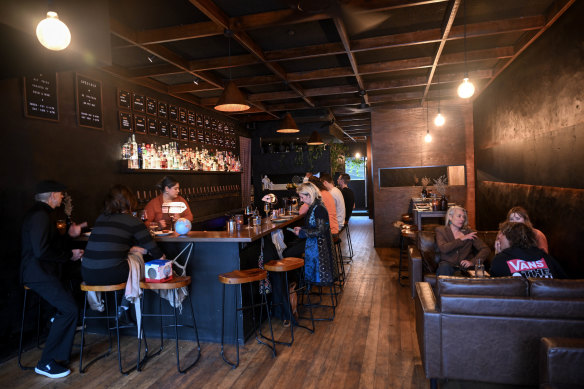
Melbourne’s $200-plus steaks
Botswana Butchery
Rangers Valley Black Onyx tomahawk
$340 for 1.6 kilograms
Saint Dining
O’Connor Tomahawk
$330 for 1.6 kilograms
Saint Dining
Mayura Station Wagyu T-bone
$310 for 1.2 kilograms
Victor Churchill
Rangers Valley Black Market bistecca
$265 for 1 kilogram
Atria
O’Connors Angus beef rib-eye
$210 for 1.2 kilograms
Where to find bargain steaks at Melbourne restaurants
Half Acre
Thursdays feel a little prehistoric at this South Melbourne eatery, as 1.2-kilogram tomahawks grace most tables. They’re on offer for $85, generous enough to share up to three people, and there’s still room in the budget for sides, a glass of wine and perhaps even dessert. Available lunch and dinner every Thursday.
112 Munro Street, South Melbourne, halfacre.com.au
March
Primo producers such as Mayura Station normally have a high entry fee, but at this more casual sister venue to fine-diner Ides, you can try them for $60 on Wednesdays. Steak is the star of a three-course set menu, plus you can order from a wine list assembled by Ides’ very talented sommeliers.
90 Smith Street, Collingwood, marchmelbourne.com.au
Bar Savarin
Forgot about your favourite pub’s weekly steak night again? You get three shots at bargain beef at this suburban gem, which dedicates its midweek dinners to a $40 deal involving scotch fillet and cafe de Paris butter, plus sides and a snack to start. A vegetarian option is also offered.
132 Keys Road, Cheltenham, @bar.savarin
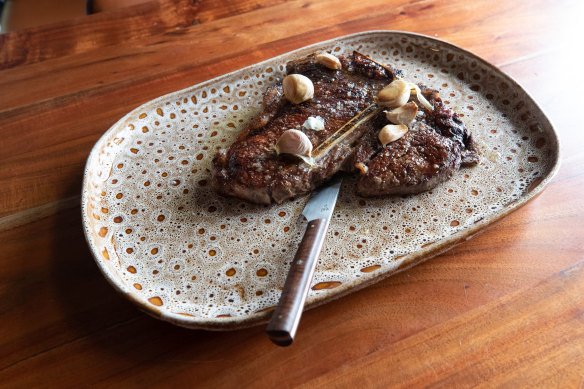
Cinder
At the back of the Terminus Hotel, this upscale steakhouse – a separate venue – usually flings big-name steaks on the grill, such as Robbins Island, with price tags to match. But clear a Wednesday night in your calendar to take advantage of a $39 piece of Westholme Wagyu plus slaw, chips and sauce. Cuts rotate, but might be rump cap, rostbiff (rump without the cap) or flank.
492 Queens Parade, Fitzroy North, cinder.melbourne
Bonny
Good news: Wagyu Wednesdays at this northside watering hole have been cloned. You can now roll up on Tuesdays for the $30 deal that includes topside from Sher Wagyu, slowly roasted over charcoal and served with mountain pepper sauce, bottomless fries and a leafy salad.
177 Brunswick Street, Fitzroy, bonnybar.com.au
Restaurant reviews, news and the hottest openings served to your inbox.
Sign up